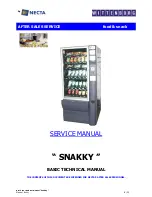
Useful Sewing Tips
31
SE
W
IN
G
B
A
SI
C
S
2
d
Release the presser foot locking pin (black button).
The presser foot remains level, allowing the fabric to
be fed.
After the seam is sewn, the presser foot will return to
its original angle.
■
Sewing thin fabrics
When sewing thin fabrics such as chiffon, the stitching may
become misaligned or the fabric may not feed correctly. Move
the needle (be sure to use a fine needle) to the furthest left or
right hand position so that the fabric does not get pulled down
into the feed dog area. If this occurs or there is shrinkage of
the stitching, place non-woven water soluble stabilizer under
the fabric and sew them together.
■
Sewing stretch fabrics
First, baste the pieces of fabric together, and then sew without
stretching the fabric. If the stitching is misaligned, place non-
woven water soluble stabilizer under the fabric and sew them
together.
For best results when sewing on knit fabrics use the stretch
stitches. Also be sure to use a needle for knits (Ball Point
needle (gold colored)). The recommended stitches and their
stitch numbers are shown below.
■
Sewing leathers or vinyl fabrics
When sewing fabrics that may stick to the presser foot, such as
leather or vinyl fabrics, replace the presser foot with the
walking foot* or non stick foot* .
* Items sold separately, please contact your authorized Baby
Lock retailer.
If the leather or vinyl fabric sticks to the flat bed attachment,
sew with copy paper or tracing paper placed on top of the flat
bed attachment so the fabric moves smoothly.
If the paper is positioned so that it does not cover the needle
plate, the paper will not be sewn together with the fabric.
1
Copy paper or tracing paper
CAUTION
• If fabric more than 6 mm (15/64 inch) thick is
sewn or if the fabric is pushed with too much
force, the needle may bend or break.
1
water soluble stabilizer
(non-woven)
1
Basting
No.
05
06
10
Stitch
Note
• Be sure to follow manufacturer's instructions when
using water soluble stabilizer. It may not be compatible
with some fabrics.
1
1
1
Leather
Note
• The walking foot can only be used with straight or
zigzag stitch patterns. Do not sew reverse stitches with
the walking foot.
• When sewing with the walking foot, sew at a speed
between slow and medium.
• When using the walking foot, test sew on a scrap piece
of leather or vinyl that is to be used in project to make
sure foot does not leave any marks.
1
a
















































